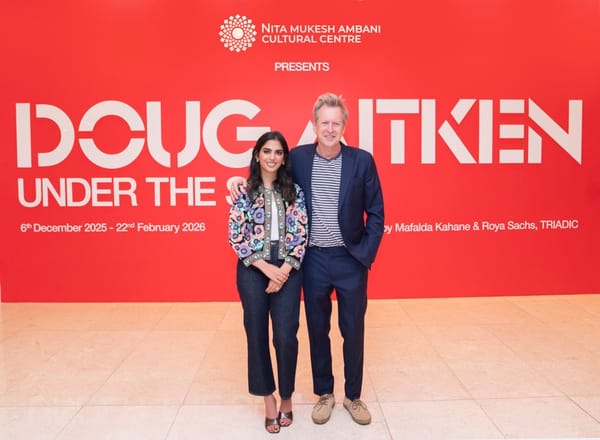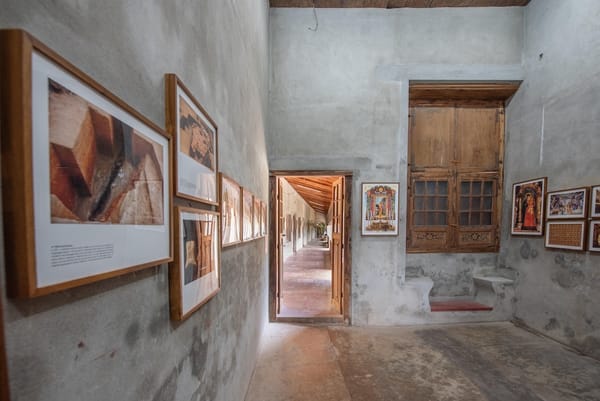How Art Fairs Shape an Artist’s Career: Opportunities, Challenges, and Long-Term Impact
Art fairs offer artists exposure, sales, and networking opportunities but also come with financial and creative challenges. This article explores their evolving role in shaping an artist’s career in today’s global art market.

Art fairs have long been seen as a pivotal force in the art world, offering artists a platform to showcase their work to collectors, curators, and industry professionals. Yet, they remain a double-edged sword—promising exposure and sales but also demanding significant financial and creative investments. In an era where digital platforms are reshaping art commerce, how relevant are art fairs today, and what impact do they have on an artist’s career?
The Rise of Art Fairs
Historically, artists relied on galleries and patronage to gain recognition. The emergence of international art fairs in the late 20th century, such as Art Basel and Frieze, revolutionised the industry. These fairs created a global marketplace where galleries, collectors, and artists converge, accelerating an artist’s trajectory from emerging talent to established name.
For many artists, debuting at a major art fair signifies a rite of passage. The immediate visibility and credibility conferred by participation can open doors to gallery representation, museum acquisitions, and private commissions. A successful fair can result in an artist’s work being collected by influential figures, dramatically altering their career prospects.
The Benefits: Visibility, Networking, and Market Validation
1. Exposure to a Global Audience
Unlike a gallery exhibition, which might attract a niche local audience, art fairs provide access to thousands of collectors, curators, and critics from around the world. This international reach is invaluable for artists looking to expand beyond their regional market.
2. Direct Sales and Market Growth
For artists not yet represented by a major gallery, fairs present a unique opportunity to sell their work directly. Even for gallery-affiliated artists, the volume of collectors at an art fair often exceeds that of a gallery’s foot traffic, leading to higher sales potential.
3. Networking and Career Opportunities
Art fairs act as networking hubs where artists meet gallerists, collectors, curators, and fellow artists. These interactions often lead to exhibition invitations, collaborations, or even institutional acquisitions. An introduction to the right collector or museum director can significantly elevate an artist’s standing.
4. Market Validation and Critical Recognition
Presence at a high-profile art fair signals that an artist’s work is market-worthy. If an artist's work sells well, it reinforces their value in the eyes of collectors and gallerists. Even if sales are slow, critical attention from curators or critics can contribute to long-term career growth.
The Challenges: Financial, Creative, and Psychological Pressures
1. The Cost of Participation
Exhibiting at an art fair is expensive. Booth fees for galleries can range from £5,000 to over £100,000, and these costs are often passed down to artists. Additional expenses include shipping, travel, accommodation, and production of new work. For independent artists without gallery support, self-funding an art fair appearance can be financially crippling.
2. Commercialisation vs. Creative Integrity
Art fairs are commercial spaces where marketability often takes precedence over artistic innovation. The pressure to create work that sells can lead to artists producing safer, more decorative pieces rather than taking creative risks. This tension between commerce and creativity can dilute an artist’s vision in the pursuit of market success.
3. Emotional and Psychological Toll
The competitive nature of art fairs can be overwhelming. For artists whose work does not attract buyers or critical attention, the experience can be disheartening. The intense environment of a fair, coupled with the pressure to network and self-promote, can lead to burnout and self-doubt.
Are Art Fairs Still Relevant in the Digital Age?
With the rise of digital platforms, some question whether art fairs remain essential. Online marketplaces like Artsy and Instagram allow artists to reach global audiences without the financial burden of fairs. Virtual exhibitions and NFT platforms further decentralise art commerce, offering new ways to gain visibility.
However, the physical experience of encountering art in person remains unmatched. Collectors often prefer to see works firsthand before making significant purchases. The social dynamics of fairs—serendipitous meetings, critical discussions, and the excitement of discovery—are difficult to replicate online.
Strategic Approaches: Maximising the Impact of Art Fairs
For artists considering art fairs, strategic planning is key. Here are some approaches to making participation worthwhile:
- Choose the Right Fair: Not all fairs cater to the same audience. Emerging artists might benefit from smaller, curated fairs like LISTE or The Other Art Fair rather than competing in high-stakes markets like Art Basel.
- Engage Beyond Sales: Even if sales are slow, connecting with curators, critics, and gallerists can lead to future opportunities. Building relationships is often more valuable than immediate sales.
- Leverage Digital and Social Media: Promoting fair participation online can extend its reach. Live streaming, behind-the-scenes content, and direct engagement with online audiences can complement in-person exposure.
- Assess ROI (Return on Investment): If the costs outweigh the benefits, alternative strategies like online exhibitions, artist residencies, or direct-to-collector sales may be more sustainable.
A Stepping Stone, Not a Guarantee
Art fairs are powerful career catalysts but are not a one-size-fits-all solution. While they can launch an artist into the global market, they also come with financial risks and creative pressures. For artists, the key lies in strategic participation—understanding their goals, selecting fairs wisely, and balancing commercial interests with artistic integrity.





